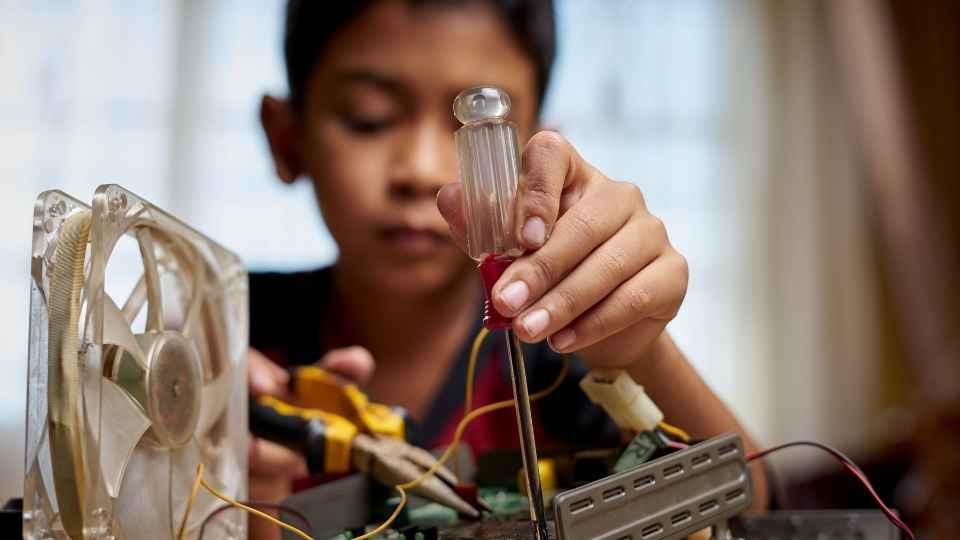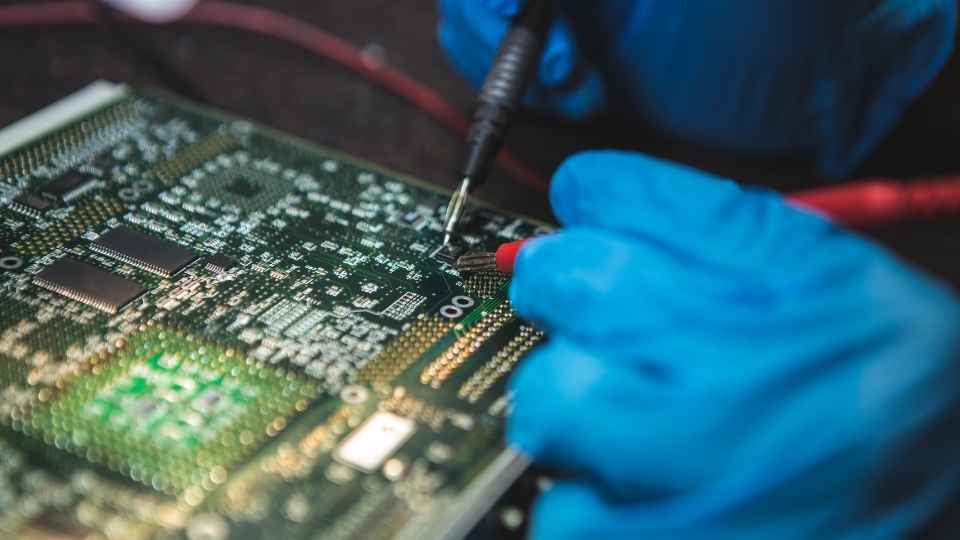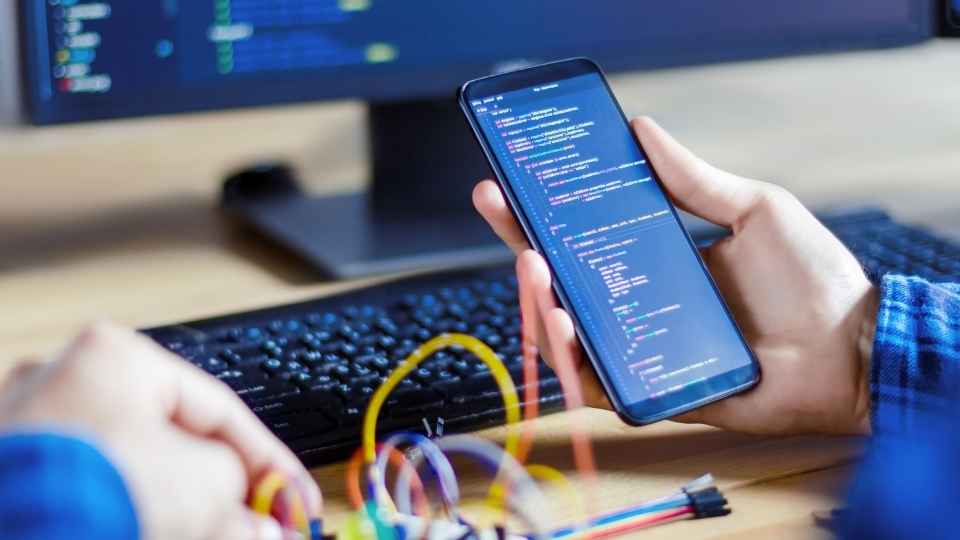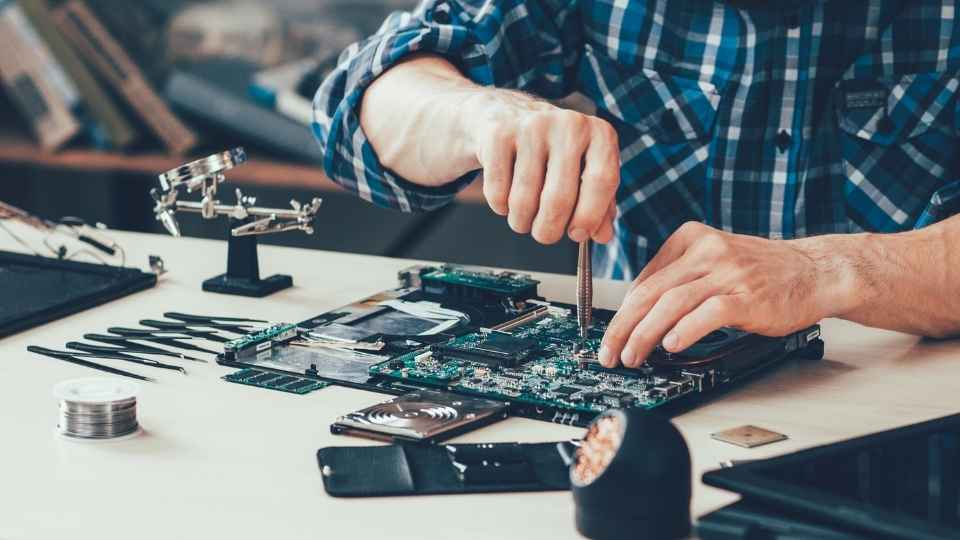
In the realm of technology, microcontrollers serve as the gatekeepers between the digital and physical worlds. Symbolizing the bridge that connects our desires for freedom with the power to make them a reality, these miniature devices enable us to interface with the real world through embedded systems.
With their precise programming languages and intricate interfacing techniques, microcontrollers bring life to sensors and actuators, enabling them to seamlessly interact with external devices.
Join us on this journey as we explore how microcontrollers shape our world in ways both technical and awe-inspiring.
Key Takeaways
- Microcontrollers serve as central processing units in embedded systems and integrate various hardware interfaces on a single chip.
- Programming languages like C, C++, Python, Java, and JavaScript are used for programming microcontrollers, depending on project requirements and desired freedom.
- Real-world interfacing techniques involve the use of sensors, actuators, communication protocols, and analog-to-digital converters to sense the environment, control devices, and exchange data.
- Programming in embedded systems enables the development of device drivers, implementation of communication protocols, control algorithms, and seamless integration between hardware components.
Understanding Microcontrollers: An Overview of Their Role in Embedded Systems
Microcontrollers play a crucial role in embedded systems by serving as the central processing unit responsible for interfacing with the real world. They are small, self-contained devices that integrate a microprocessor, memory, and input/output peripherals onto a single chip. These versatile components are designed to execute specific tasks and control various hardware interfaces such as sensors, motors, displays, and communication modules.
One of the key advantages of using microcontrollers is their ability to operate in real-time environments with minimal power consumption. Their compact size also makes them ideal for applications where space is limited. Furthermore, microcontrollers offer flexibility in terms of programming languages and development tools. This allows developers to choose the most suitable language for their project requirements.
Programming microcontrollers involves writing code that instructs these devices on how to interact with different I/O devices and perform specific functions. In the following section, we will explore the various programming languages commonly used for this purpose and delve into their features and capabilities.
Programming Microcontrollers: The Language of the Real World
Programming microcontrollers is the key to controlling and interacting with the real world in embedded systems.

By using specialized programming languages designed for microcontrollers, developers can write code that translates high-level instructions into low-level machine language understood by the microcontroller.
This allows for precise control over inputs and outputs, enabling the microcontroller to interface with sensors, actuators, and other components of the physical environment.
Programming Languages for Microcontrollers
The selection of suitable programming languages for microcontrollers plays a crucial role in ensuring efficient and effective communication between the microcontroller and the real world. When choosing a programming language, developers must consider factors such as performance, memory usage, ease of use, and compatibility with hardware peripherals.
C and C++ are popular choices due to their low-level capabilities and direct access to hardware resources. They allow developers to write code that is close to the machine level, optimizing performance and enabling precise control over I/O operations.
Additionally, Python is gaining popularity for its simplicity and versatility in rapid prototyping.
Other languages like Java or JavaScript can also be used, but they may have higher resource requirements or limitations in terms of real-time processing capabilities.
Ultimately, the choice of programming language depends on the specific requirements of the project and the freedom desired by the audience.

Real-World Interfacing Techniques
To ensure seamless integration between hardware and software, developers employ a range of techniques to establish connections and exchange data in practical environments.
Real-world interfacing techniques play a crucial role in enabling microcontrollers to interact with the physical world. One common technique is the use of sensors and actuators, which allow microcontrollers to sense their environment and control external devices. This can include temperature sensors, motion detectors, or even motors and lights.
Another technique involves communication protocols such as UART, I2C, SPI, or CAN bus, which enable microcontrollers to exchange data with other devices or systems.
Additionally, analog-to-digital converters (ADC) are used to convert real-world signals into digital form for processing by the microcontroller.
These techniques empower developers to create versatile embedded systems that can interact with diverse real-world scenarios while maintaining flexibility and freedom of choice in implementation.
Role of Programming in Embedded Systems
Developers leverage their coding expertise to design and implement software solutions that enable seamless integration between hardware components in embedded systems. Through programming, they can control the functionality of microcontrollers and ensure efficient communication with external devices.
Here are three key roles that programming plays in embedded systems:

Device Drivers: Developers write device drivers to provide an interface between the operating system and hardware peripherals, such as sensors or actuators. These drivers allow the microcontroller to interact with external devices.
Communication Protocols: Programming enables the implementation of various communication protocols like UART, SPI, or I2C. These protocols facilitate data exchange between the microcontroller and other devices, enabling them to work together effectively.
Control Algorithms: By writing algorithms in code, developers can regulate and control different aspects of an embedded system's behavior, ensuring optimal performance and responsiveness.
By understanding these programming concepts in embedded systems, developers can create software solutions that effectively interface microcontrollers with external devices.
Now let's explore interfacing techniques for connecting microcontrollers to external devices.
Interfacing Techniques: Connecting Microcontrollers to External Devices
Interfacing techniques involve establishing connections between microcontrollers and external devices, enabling communication and control. Through the use of various communication protocols, such as I2C, SPI, and UART, microcontrollers can send and receive data to interact with different hardware components.
This allows for efficient integration of both hardware and software in embedded systems.

Communication Protocols for Interfacing
Communication protocols play a crucial role in facilitating the seamless exchange of data between microcontrollers and external devices in embedded systems. These protocols define the rules and procedures for transmitting and receiving data, ensuring effective communication and interoperability.
Here are three key aspects to consider when selecting a communication protocol:
Speed: The protocol should support the required data transfer rate to meet system demands.
Reliability: It is important that the protocol provides error detection and correction mechanisms to ensure accurate data transmission.
Flexibility: A flexible protocol allows for easy integration with various devices, enabling compatibility and scalability.
Some commonly used communication protocols in embedded systems include UART (Universal Asynchronous Receiver-Transmitter), SPI (Serial Peripheral Interface), I2C (Inter-Integrated Circuit), and CAN (Controller Area Network). Each protocol has its own advantages and trade-offs, allowing developers to choose the most suitable option based on their specific requirements.
Input and output signals are essential components of any embedded system, as they allow for the interaction between the digital world and the physical environment. These signals enable microcontrollers to receive data from sensors or other external devices and transmit information to actuators or displays.

Input signals can be analog or digital, depending on the type of sensor being used. For example, temperature sensors typically provide analog input signals that need to be converted into digital format using an analog-to-digital converter (ADC).
On the other hand, output signals can control various types of actuators such as motors, LEDs, or displays. Microcontrollers generate these output signals by converting digital data into appropriate voltage levels using a digital-to-analog converter (DAC) or by directly driving GPIO pins.
Understanding how input and output signals work is fundamental in designing effective embedded systems that interact with the real world seamlessly.
Hardware and Software Integration
To ensure seamless integration between hardware and software components, careful coordination and synchronization must be established at the interface level. This is crucial for embedded systems, where microcontrollers interface with the real world.
Here are three key considerations for achieving effective hardware and software integration:
Compatibility: Both the hardware and software components must be compatible with each other in terms of communication protocols, data formats, and power requirements.
Timing: Synchronization of timing between hardware events and software processes is essential to ensure accurate data processing and response.

Error handling: Robust error handling mechanisms should be implemented to handle any discrepancies or malfunctions that may occur during interaction between hardware and software.
Sensors: Bridging the Gap Between the Physical and Digital Worlds
Sensors play a crucial role in enabling microcontrollers to gather real-time data from the physical world and translate it into digital information. These devices act as the bridge between the analog signals generated by various environmental factors and the binary language that microcontrollers can understand.
By accurately measuring attributes like temperature, pressure, motion, or light intensity, sensors provide valuable input to microcontrollers for decision-making processes. They allow embedded systems to interact with their surroundings, making them responsive and adaptive.
Whether it's monitoring industrial equipment or controlling home automation systems, sensors enable microcontrollers to capture meaningful data about the environment in which they operate. This capability empowers users with freedom as they can design applications that leverage real-world information, enhancing efficiency, safety, and convenience in diverse domains.
Actuators: Bringing the Real World to Life With Microcontrollers
Actuators are essential components in embedded systems that allow microcontrollers to interact with the physical world. They convert digital signals into mechanical or physical actions, bringing life and movement to devices and machines. Here's why actuators play a crucial role:
Diverse Applications: Actuators enable a wide range of applications, from simple tasks like turning on lights to complex operations like controlling robotic arms or opening doors.
Precision Control: Actuators provide precise control over movements and forces, allowing microcontrollers to manipulate objects with accuracy and efficiency.

Enhanced User Experience: By incorporating actuators, microcontroller-based systems can create immersive experiences for users by providing haptic feedback, realistic simulations, and interactive interfaces.
With the ability to bring the digital world into the physical realm, actuators empower engineers and developers to design innovative solutions that enhance our daily lives while giving us the freedom to explore new possibilities.
Applications of Microcontrollers: Real-World Examples of Embedded Systems
One example of how microcontrollers are utilized in practical applications is through the integration of intelligent control systems in smart home automation.
Microcontrollers play a crucial role in enabling the automation and remote control features found in modern smart homes. These intelligent control systems, powered by microcontrollers, provide homeowners with the freedom to manage various aspects of their homes with ease and efficiency.
Microcontrollers act as the brain behind smart home devices such as thermostats, lighting systems, security cameras, and door locks. They receive inputs from sensors and user commands, process them using pre-programmed instructions, and then generate appropriate outputs to control these devices. This allows homeowners to remotely monitor and adjust temperature settings, turn lights on or off from anywhere using their smartphones or voice assistants, and even secure their homes remotely.
The use of microcontrollers in smart home automation contributes to the overall comfort, convenience, energy efficiency, and security within residential spaces.
As technology continues to advance at a rapid pace, microcontrollers will continue playing a vital role in shaping our future homes for increased freedom and flexibility.

Frequently Asked Questions
What Are the Different Types of Microcontrollers Commonly Used in Embedded Systems?
The different types of microcontrollers commonly used in embedded systems vary based on factors such as processing power, memory capacity, and I/O capabilities. Examples include PIC, AVR, ARM, and MSP430.
How Do Microcontrollers Handle Multiple Tasks Simultaneously?
Microcontrollers handle multiple tasks simultaneously by utilizing a combination of interrupt-based programming, task scheduling algorithms, and real-time operating systems. These techniques allow for efficient resource allocation and prioritization of tasks in embedded systems.
What Are Some Common Challenges in Programming Microcontrollers?
Common challenges in programming microcontrollers include limited memory and processing power, real-time constraints, hardware compatibility issues, and debugging complexities. These factors require careful optimization, efficient code design, and extensive testing to ensure reliable performance in embedded systems.
How Do Microcontrollers Communicate With Each Other in a Networked System?
Microcontrollers communicate with each other in a networked system through various protocols such as UART, I2C, SPI, and CAN. For example, in a smart home system, microcontrollers exchange data to control appliances and monitor sensors.
Can Microcontrollers Be Used in Safety-Critical Applications?
Microcontrollers can be used in safety-critical applications due to their ability to interface with the real world. They provide precise control and monitoring capabilities, ensuring reliable operation and adherence to safety standards.
 Basic Electronics ConceptsEssential ToolsCircuit Design BasicsMicrocontrollersDIY Electronics ProjectsRoboticsPrivacy PolicyTerms And Conditions
Basic Electronics ConceptsEssential ToolsCircuit Design BasicsMicrocontrollersDIY Electronics ProjectsRoboticsPrivacy PolicyTerms And Conditions
